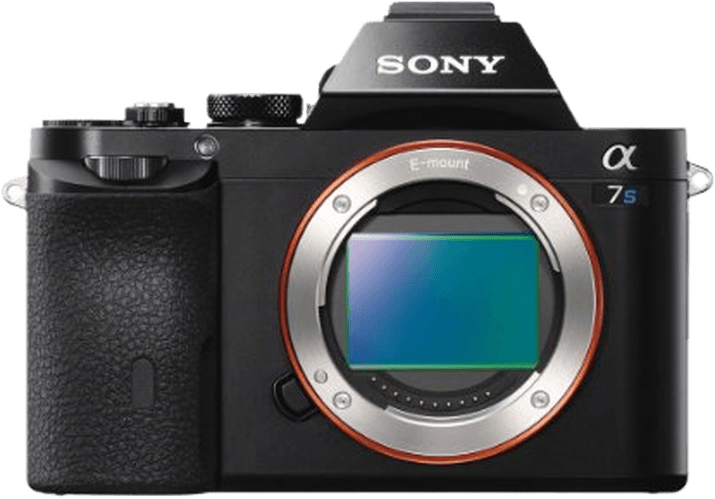Sony a7S Specs and Scores

The Sony a7S scores a solid 55/100. Announced on April 6th, 2014, this mirrorless camera was launched at a price of $2,499. With dimensions of 127 x 94 x 48mm and weighing 489g or 1.08lbs, it is a compact and lightweight option.
Considering the camera’s specifications, it still holds up decently in today’s market. However, newer models have surpassed the a7S in terms of features and performance. Despite this, the Sony a7S remains a reliable choice for those seeking a mirrorless camera from 2014.
Sony a7S Overview and Optics
The Sony a7S receives a 60/100 score for its optics. With 12.2 megapixels, a shooting speed of 5 fps, and a CMOS sensor, this camera offers decent performance. The Bionz X processor and a DXOMARK score of 87 for the sensor contribute to its overall image quality. Utilizing a full-frame sensor size and Sony FE lens mount, the a7S accommodates a variety of lenses. However, it lacks image stabilization, which may prove challenging in certain shooting situations. The camera’s 3:2 aspect ratio is standard and versatile.
Despite these specifications, the Sony a7S faces competition in the market. Many contemporary cameras offer higher megapixel counts, faster shooting speeds, and built-in image stabilization. Nonetheless, the a7S remains a viable option for photographers who prioritize low-light performance and compact design. The optics score and specifications provide a clear understanding of the camera’s capabilities and limitations.
Sony a7S Video Performance
The Sony a7S receives a video score of 56/100. It offers Full HD video resolution with maximum dimensions of 1920 x 1080 and a maximum frame rate of 60fps. However, it lacks built-in time-lapse functionality.
In the current market, these video specifications may not meet the expectations of professional videographers. Many competitors now offer 4K resolution, higher frame rates, and additional video features. The absence of time-lapse functionality also limits the creative possibilities for users.
The Sony a7S has decent video capabilities, but they do not stand out in today’s competitive market. Users seeking cutting-edge video features may want to explore other options.
Sony a7S Features and Benefits
The Sony a7S features score is 54/100. Its screen size measures 3 inches with a resolution of 921,000 dots. This camera does not have a touchscreen, but it does have a flip screen. GPS is not available, but it is equipped with WiFi. However, Bluetooth connectivity is absent.
In the current market, the Sony a7S has a decent feature set, but it does lack some modern conveniences. The absence of a touchscreen and Bluetooth may be disappointing for some users, while the flip screen and WiFi connectivity are useful additions. The screen resolution is adequate, but higher resolutions are available in other cameras.
The Sony a7S remains a solid choice for those who prioritize video and low light capabilities. However, users seeking advanced features and connectivity options may want to explore other options.
Sony a7S Storage and Battery
The Sony a7S scores 21/100 in storage and battery. This camera has a single memory card slot, accepting SD, SDHC, and SDXC cards, as well as Memory Stick Duo, Pro Duo, and Pro-HG Duo cards. The battery life of the Sony a7S is 380 shots, using the NP-FW50 battery type. However, this camera lacks USB charging capabilities.
Comparing these specifications to other cameras in today’s market, the Sony a7S falls short in both storage and battery life. Most modern cameras offer multiple memory card slots and longer battery life, making them more convenient for extended shooting sessions. The absence of USB charging further limits the Sony a7S’s flexibility and practicality.
Despite the camera’s impressive optics, video, and features, the storage and battery specifications of the Sony a7S are underwhelming when compared to current market standards. This may impact the decision of potential buyers who value convenience and extended shooting capabilities.
